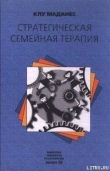
Текст книги "ПСИХИКА И ЕЕ ЛЕЧЕНИЕ: Психоаналитический подход"
Автор книги: Вейкко Тэхкэ
Жанры:
Психология
,сообщить о нарушении
Текущая страница: 42 (всего у книги 45 страниц)
Литература
Abend, S. M., Porder, M. S., & Willick, M. S. (1983), Borderline Patients: Psychoanalytic Perspectives. New York: International Universities Press.
Abraham, K. (1924), A short study of the development of the libido, viewed in the light of mental disorders. In: Selected Papers of Karl Abraham. London: Hogarth Press, 1949, pp. 418-501.
Adier, G. (1985), Borderline Psychopathotogy and Its Treatment. Northvale, NJ: Jason Aronson.
Buie, D. H. (1979), Aloneness and borderline psychopatholo-gy: The possible relevance of child development issues. Internal, j. Psycho-Anal., 60:83-96.
Agren, S. G. (1974), Nation har djup for oss alia. Helsinki: Soderstrom.
Alexander, F. (1925), A metapsychological description of the process of cure. Internal, j. Psycho-Anal., 8:13-34.
French, Т. М. (1946), Psychoanalytic Therapy. New York: Ronald Press. American Heritage Dictionary (1982), Boston: Houghton Mifflin.
Balint, M. F. (1932), Character analysis and new beginning. In: Primary Law and Psychoanalytic Technique. London: Tavis-tock, 1965.
Basch, M. F. (1976), The concept of affect: A re-examination. J. Amer. Psychoanal. Assn., 24:759-777.
(1983), Empathic understanding: A review of the concept and some theoretical considerations, J. Amer. Psycho-anal. Assn., 31:101—126.
Beres, D. (1968a), The humanness of human beings: Psychoanalytic considerations. Psychoanal. Quart.. 37:487-522.
(1968b), The role of empathy in psychotherapy and psychoanalysis. J. Hillside Hasp., 17:362-369.
Arlow.J. A. (1974), Fantasy and identification in empathy. Psychoanal. Quart.. 43:26-50.
Berger. D. M. (1987), Clinical Empathy. Northvale, NJ: Jason Aronson.
Bergmann, M. S. (1980), On the intrapsychic function of falling in love. Psychoanal. Quart., 49:56-76.
(1987), The Anatomy of Loving. New York: Columbia University Press.
Bibring, E. (1953), The mechanism of depression. In: Affective Disorders, ed. P. Greenacre. New York: International Universities Press, pp. 13-48.
Bion, W. R. (1955), Language and the schizophrenic. In: New Directions in Psychoanalysis, ed. M. Klein, P. Heiman, & R. E. Money-Kyrle. London: Tavistock, pp. 220-239.
(1959), Attacks on linking. Internal. J. Psycho-Anal., 40:308-315.
(1962), learning from Experience. New York: Basic Books. (1965), Transformations. New York: Basic Books.
Blanck, G. (1984), The complete Oedipus complex. Internal. J. Psycho-Anal; 65:331-339.
Blanck, R. (1974), Ego Psychology: Theory and Practice. New York: Columbia University Press. (1979). Ego Psychology, Vol. II. New York: Columbia University Press.
Bleuler, E. (1910), Vortrag uber Ambivalenz. Zentralblatt fur Psychoanalyse, 1:266.
Bios. P. (1962), On Adolescence. New York: Free Press.
(1967), The second individuation process of adolescence. The Psychoanalytic Study of the Child, 22:162-186. New York: Inernational Universities Press.
(1968), Character formation in adolescence. The Psychoanalytic Study of the Child. 23:245-263. New York: International Universities Press.
(1979), The Adolescent Passage. New York: International Universities Press.
(1985), Son and Father. New York; Free Press
Blum, H. (1986). Countertransference: Concepts and controversies. In: Countertransference, ed. E. Slakter. Northvale, NJ:Jason Aronson.
Bollas, С (1983), Expressive uses of the countertransference. Contemp. Psychoanal., 19:1-34.
Boyer, L., В. (1966), Office treatment of schizophrenic patients by psycboanalysis. In: Psychoanalytic Treatment of Schizophrenic, Borderline and Characterological Disorders, ed. L. B. Boyer & P. L. Giovacchini. New York: Jason Aron-son, 1967, pp. 129-170.
(1983), The Regressed Patient. New York: Jason Aronson.
Giovacchini, P. L. (1967), Psychoanalytic Treatment of Schizophrenic, Borderline and Characlerological Disorders. New York: Jason Aronson.
Brenner, C. (1968), Psychoanalysis and science, J. Amer. Psy-choanal. Asm., 16:675-696.
(1974), Depression, anxiety and affect theory. Internal. J. Psycho-Anal., 55:25-32.
(1976), Psychoanalytic Technique and Psychic Conflict. New York: International Universities Press.
(1983). The Mind in Conflict. New York: International Universities Press.
Breuer, F., & Freud, S. (1895), Studies on Hysteria. Standard Edition, 2. London: Hogarth Press.
Buie, D. H. (1981), Empathy: Its nature and limitations. J. Amer. Psychoanal. Assn., 29:281-307.
Adler, G. (1973), The uses of confrontation in the psychotherapy of borderline cases. In: Confrontation in Psychotherapy, ed. G. Adler & P.G. Myerson. New York: Science House, pp. 123-146.
(1982), Definitive treatment of the borderline personality. In: Internal. J. Psychoanal. Psychother., Vol. 9, ed. R. Langs. New York: Jason Aronson, 1982-1983.
Burlingham, D. (1967), Empathy between infant and mother. J. Amer. Psychoanal. Assn., 15:764-780.
Chasseguet-Smirgel.J. (1985), The Ego Ideal: A Psychoanalytic Essay on Malady of the Ideal. New York: W. W. Norton.
Cobliner, W. A. (1967), Psychoanalysis and the Geneva School of genetic psychology: Parallels and counterparts. Inter-nat. J. Psychiat., 3:82-116.
Cohen, J.,&c Kinston, W. (1984), Repression theory: A new look at the cornerstone. Internal. J. Psycho-Anal., 65:411-422.
Compton, A. (1983a), The current status of the psychoanalytic theory of instinctual drives. I: Drive concept, classification, and development. Psychoanal. Quart., 52:364-401.
(1983b),The current status of the psychoanalytic theory of instinctual drives. II: The relation of the drive concept to structures, regulatory principles and objects. Psychoanal. Quart., 52:402-426.
(1985), The concept of identification in the work of Freud, Ferenczi and Abraham. Psychoanal. Quart., 54:200-233.
De Saussure, R. (1939), Identification and substitution. Internal. J. Psycho-Anal., 20:465-470.
Deutsch, H. (1926), Occult processes occurring during psychoanalysis. In: Psychoanalysis and the Occult, ed. G. De-vereux; New York: International Universities Press, 1953, pp. 133-146.
Dollard. J. L., Doob, 1.. W., Miller. N. E., & Scars. R. R. (1930). Frustration and Aggression. New Haven, CT: Yale University Press.
Dorpat, T. L. (1976), Structural conflict and object relations conflict. J. Amer. Psychoanal. Assn., 24:855-874.
(1979), Is splitting a defence? Internal. Rev. Psycho-Anal.. 6:105-113. Druck, A. (1989), Four Therapeutic Approaches to the Borderline Patient. Northvale, NJ: Jason Aronson.
Edgcumbe, R., & Burgner, M. (1973), Some problems in the conceptualization of early object relationships. Part II: The concept of object constancy. The Psychoanalytic Study of the Child. 27:315-333. New York: Quadrangle Books.
(1975), The phallic-narcissisic phase: A differentiation between pre-oedipal and oedipal aspects of phallic development. The Psychoanalytic Study of the Child, 30:161-181. New York: Quadrangle Books.
Eissler, K. R. (1953), The effect of the structure of the ego on psychoanalytic technique, j. Amer. Psychoanal. Assn.. 1:103—143.
Emde, R. N. (1988), Development terminable and interminable II. Recent psychoanalytic theory and therapeutic considerations. Internal. J. Psycho-Anal.. 69:283-296.
Engel, G. L. (1961), Is grief a disease? A challenge for medical research. Psychosom. Mod.. 23:18-22.
Epstein, L. (1979), On the therapeutic use of countertransfer-ence data with borderline patients. Contemp. Psychoanal., 15:248—275.
Erikson, E. H. (1950), Childhood and Society. New York: W. W. Norton.
(1956), The problem of ego identity. J. Amer. Psychoanal. Assn., 4:56-121.
(1959), Identity and Life Cycle, Psychological Issues, Monogr. I. New York: International Universities Press.
Esman, A. H. (1975), The Psychology of Adolescence. New York: International Universities Press.
Federn, P. (1933), On the analysis of psychotics. Internal. J. Psycho-Anal.. 15:209-215.
(1952), Ego Psychology and the Psychoses. New York: Basic Books. Fenichel, O. (1924), From the terminal phase of analysis. In: The Collected Papers of Otto Fenichel. Vol. 1. New York: W. W. Norton, 1953, pp. 27-31.
(1941), Problems of Psychoanalytic Technique. New York: Psychoanalytic* Quarterly.
(1945), The Psychoanalytic Theory of Neurosis. New York: W. W. Norton.
(1953), The Collected Papers of Otto Fenichel. First Series. New York: W. W. Norton.
Ferenczi, S. (1919), On the technique of psycho-analysis. In: Further Contributions to the Theory and Technique of Psychoanalysis. London: Hogarth Press, 1950, pp.177-189.
(1927), The problems of termination of psycho-analysis. In: Final Contributions to the Problems and Methods of Psycho-Analysis. New York: Basic Books, 1955, pp. 77-86.
(1931), Child-analysis in the analysis of adults. In: Final Contributions to the Problems and Methods of Psycho-Analysis. New York: Basic Books, 1955, pp. 126-142.
Ferreira, A. J. (1961), Empathy and the bridge function'of the ego. J. Amer. Psychoanal. Assn., 9:91-105.
Firestein, S. K. (1978), Termination in Psychoanalysis. New York: International Universities Press.
Fliess, R. (1942), The metapsychology of the analyst. Psychoanal. Quart., 11:211-227.
(1953), Countertransference and counteridentification. J. Amer. Psychoanal. Assn.. 1:268-284.
Fraiberg, S. (1969), Libidinal object constancy and mental representation. The Psychoanalytic Study of the Child, 24:9-47. New York: International Universities Press:
Frank, J. D. (1959), The dynamics of the psychotherapeutic relationship. Psychiatry. 22:17-39.
Freud, A. (1936), The Ego and the Mechanisms of Defense. New York: International Universities Press.
(1958), Adolescence. The Psychoanalytic Study of the Child, 13:255-278. New York: International Universities Press.
(1963), The concept of developmental lines. The Psychoanalytic Study of the Child, 18:245-265. New York: International Universities Press.
(1965), Normality and Pathology in Childhood Assessments of Development. New York: International Universities Press.
Freud, S. (1894), The neuro-psychoses of defence. Standard Edition. 3:43-61. London: Hogarth Press, 1962.
(1900), The Interpretation of Dreams. Standard Edition, 4 & 5. London: Hogarth Press, 1953.
(1905), Three Essays on the Theory of Sexuality. Standard Edition. 7:125-245. London: Hogarth Press, 1953.
(1910). The future prospects of psycho-analytic therapy. Standard Edition. 11:141-151. London: Hogarth Press, 1957.
(1911a). Formulations on the two principles of mental functioning. Standard Edition, 12:215-226. London: Hogarth Press, 1958.
(1911b), Psychoanalytic notes on autobiographical account of a case of paranoia (dementia paranoides). Standard Edition, 12:3-79. London: Hogarth Press, 1958.
(1912a), The dynamics of transference. Standard Edition, 12:99-108. London: Hogarth Press, 1958.
(1912b). On the universal tendency to debasement in the sphere of love. Standard Edition, 11:139-151. London: Hogarth Press, 1957.
(1912c), Recommendations to physicians practising psycho-analysis. Standard Edition. 12:111-120. London: Hogarth Press. 1958.
(1913). On beginning the treatment. Standard Edition. 12:123-144. London: Hogarth Press, 1958.
(1914a), On narcissism: An introduction. Standard Edition, 14:69-102. London: Hogarth Press, 1957.
(1914b), Remembering, repeating and working through. Standard Edition, 12:147-156. London: Hogarth Press, 1958.
(1915a), Instincts and their vicissitudes. Standard Edition, 14:111-140. London: Hogarth Press, 1957.
(1915b), Repression. Standard Edition. 14:143-158. London: Hogarth Press. 1957.
(1915c), The unconscious. Standard Edition, 14:161-215. London: Hogarth Press, 1957.
(1915d), A case of paranoia running counter the psychoanalytic theory of the disease. Standard Edition, 14:263-272. London: Hogarth Press, 1957.
(1917), Mourning and melancholia. Standard Edition, 14:239-260. London: Hogarth Press, 1957.
(1920), Beyond the pleasure principle. Standard Edition, 18:3-64. London: Hogarth Press, 1955.
(1921), Group psychology and the analysis of the ego. Standard Edition,
18:67-143. London: Hogarth Press, 1955.
(1922), Some neurotic mechanisms in jealousy, paranoia and homosexuality. Standard Edition, 18:223-232. London: Hogarth Press, 1955.
(1923). The ego and the id. Standard Edition. 19:3-59. London: Hogarth Press, 1961.
(1924), The dissolution of the Oedipus complex. Standard Edition, 19:173-179. London: Hogarth Press. 1961.
(1925), Some psychical consequences of the anatomical distinction between the sexes. Standard Edition, 19:241-258. London; Hogarth Press, 1961.
(1926), Inhibitions, symptoms and anxiety. Standard Edition. 20:77-174. London: Hogarth Press, 1959.
(1927), Fetishism. Standard Edition. 21:149-157. London: Hogarth Press. 1961.
(1930), Civilization and its discontents. Standard Edition, 21:59-145. London: Hogarth Press, 1961.
(1933). New introductory lectures on psycho-analysis. Standard Edition, 22:1-82. London: Hogarth Press, 1964.
(1937), Analysis terminable and interminable. Standard Edition, 23:211-253. London: Hogarth Press, 1964.
(1940), An outline of psycho-analysis. Standard Edition, 23:141-207. London: Hogarth Press, 1964.
Fromm-Reichmann, F. (1950), Principles of Intensive Psychotherapy. Chicago: University of Chicago Press.
Frosch, J. (1970), Psychoanalytic considerations of the psychotic character. J. Amer. Psychoanal. Assn., 18:24-50. Furer, M. (1967), Some developmental aspects of the superego. Internat. J. Psycho-Anal., 48:277-280.
(1972), The history of the superego concept in psychoanalysis: A review of the literature. In: Moral Values and the Superego Concept in Psychoanalysis, ed. S. C. Post. New York: International Universities Press, pp. 11-62.
Furman, R. A. (1978), Some developmental aspects of the verbalization of affects. The Psychoanalytic Study of the Child, 33:187-212. New Haven, CT: Yale University Press.
Gaddini, E. (1969). On imitation. Internal. J. Psycho-Anal., 50:475-484. Garma, A. (1931), La realidad у el ello en la esquizofrenia. Arch. Neurohiol. Psicoanal., 11:598-616.
Gill, M. M. (1954), Psychoanalysis and exploratory psychotherapy, J. Amer. Psychoanal. Assn.. 2:771-798.
(1963), Topography and Systems in Psychoanalytic Theory, Psychological Issues, Monogr. 10. New York: International Universities Press.
Gillespie, W. H. (1971). Aggression and instinct theory. Internat. J. Psycho-Anal.. 52:155-160.
Giovacchini, P. L. (1969), The influence of interpretation upon schizophrenic patients. Internal. J. Psycho-Anal.. 50:179-186.
(1972), Interpretation and definition of the analytic setting. In: Tactics and Techniques in Psychoanalytic Therapy, ed. P. L. Giovacchini. New York: Science House, pp. 291-304.
(1979), Treatment of Primitive Mental Slates. New York: Jason Aronson.
(1986), Developmenlal Disorders. Northvale, NJ: Jason Aronson.
(1989), Countertransference Triumphs and Catastrophes. Northvale, NJ: Jason Aronson.
Glover, E. (1947), Basic Mental Concepts. London: Imago.
(1955), The Technique of Psycho-Analysis. London: Bailliere, Tindall & Cox.
Goldberg, A. (1983). On the scientific status of empathy. Annual of Psychoanalysis, 11:155—159. New York: International Universities Press.
Gorkin, M. (1987), The Uses of Countertransference. North-vale, NJ: Jason Aronson.
Greenacre, P. (1958), Early physical determinants in the development of the sense of identity, J. Amer. Psychoanal Assn., 6:612-627.
Greenson, R. R. (I960), Empathy and its vicissitudes. Inter-nat. J. Psycho-Anal., 41:418-424.
(1966), Discussion. In: Psychoanalysis in the Americas, ed. R. E. Litman. New York: International Universities Press, pp. 263-266.
(1967), The Technique and Practice of Psychoanalysis. New York: International Universities Press.
Grinberg. L. (1957), Projective counteridentification and countertransference. In: Countertransference, ed. L. Epstein & A. Feiner. New York: Jason Aronsorj.
(1962), On a specific aspect of Countertransference due to the patient's projective identification. Internal. J. Psycho-Anal., 31:436-440.
Hartmann, H. (1939), Ego Psychology and the Problem of Adaptation. New York: International Universities Press.
(1950), Comment on the psychoanalytic theory of the ego. The Psychoanalytic Study of the Child, 5:74—96. New York: International Universities Press.
(1952), The mutual influences in the development of ego and id. The Psychoanalytic Study of the Child. 7:9-30. New York: International Universities Press.
(1953), Contributions to the metapsychology of schizophrenia. The Psychoanalytic Study of the Child, 8:177-198. New York: International Universities Press.
(1955), Notes on the theory of sublimation. The Psychoanalytic Study of the Child, 10:9-29. New York: International Universities Press.
(1956), Notes on the reality principle. The Psychoanalytic Study of the Child, 11:31-53. New York: International Universities Press.
(1964), Understanding and explanation. In: Essays on Ego Psychology. New York: International Universities Press, pp. 369-403.
Kris, E., & Loeweristein, R. M. (1946), Comments on the formation of psychic structure. The Psychoanalytic Study of the Child, 2:11-38. New York: International Universities Press.
(1949), Notes on the theory of aggression. The Psychoanalytic Study of the Child. 3/4:9-36. New York: International Universities Press.
(1964), Papers on Psychoanalytic Psychology, Psychological Issues, Monogr. 14. New York: International Universities Press.
Loewenstein, R. M. (1962), Notes on the superego. The Psychoanalytic Study of the Child. 17:42-81. New York: International Universities Press.
Hartocollis. P. (1983), Time and Timelessness. New York: International Universities Press.
Heiman, P. (1950), On Countertransference. Internal. J. Psycho-Anal., 31:81-84.
(1960), Countertransference. Brit.J. Mod. Psychol., 33:9-15. Hendrick, 1. (1951), Early development of the ego. Psychoanal. Quart., 20:44-61.
Hoch, P. H., & Polatin, P. (1949), Pseudoneurotic forms of schizophrenia. Psychiat. Quart., 23:248-276.
Hoffer, W. (1952), The mutual influences in the development of ego and id: Earliest stages. The Psychoanalytic Study of the Child. 7:31-41.
Jacobson, E. (1954), The self and the object world: Vicissitudes of their infantile cathexes and their influence on ide-ational and affective development. The Psychoanalytic Study of the Child, 9:75-127. New York: International Universities Press.
(1964), The Self and the Object World. New York: International Universities Press.
(1971), Depression. New York: International Universities Press. Joffe, W. G., & Sandier, J. (1965), Notes on pain, depression and individuation. The Psychoanalytic Study of the Child. 20:394-424. New York: International Universities Press.
Karush. A. (1967), Working through. Psychoanal. Quart., 36:485-531.
Kernberg, 0. F. (1965), Notes on Countertransference. J. Amer. Psychoanal. Assn., 13:38-56.
(1966), Structural derivatives of object relationships. Internal. J. Psycho-Anal.. 47:236-253.
(1967), Borderline personality organization,}. Amer. Psycho-anal. Assn., 15:641-685. (1972), Early ego integration and object relations. Ann. NY Acad. Sci., 193:233-247.
(1972), Early ego integration and object relations. Ann. NY Acad. Sci., 193:233—247.
(1975), Borderline Conditions and Pathological Narcissism. New York: Jason Aronson.
(1976), Object Relations Theory and Clinical Psychoanalysis. New York: Jason Aronson.
(1980), Internal World and External Reality. New York: Jason Aronson.
(1982), Self, ego, affects and drives. J. Amer. Psychoanal. Assn., 30:893-917.
(1984), Severe Personality Disorders. New Haven, CT: Yale University Press.
(1987), Projection and projective identification. In: Projection, Identification, Projective Identification, ed. J. Sandier. Madison, CT: International Universities Press, pp. 93-115.
Selzer, M. A., Koenigsberg, H. W., Carr, A. C, & Appel-baum, A. H. (1989), Psychodynamic Psychotherapy of Borderline Patients. New York: Basic Books.
Klein, M. (1940), Mourning and its relation to manic-depressive states. In: Contributions to Psycho-Analysis. London: Hogarth Press, pp. 311-338.
(1946), Notes on some schizoid mechanisms. Internal, J. Psycho-Anal., 27:99-100.
Knight, R. P. (1940), Introjection, projection, and identification. Psychoanal. Quart.. 9:334-341.
(1953a), Borderline states. Bull. Menn. Clinic, 17:1-12.
(1953b), Management and psychotherapy of the borderline schizophrenic patient. Bull. Menn. Clinic, 17:139-150.
Kohut. H. (1959), Introspection, empathy and psychoanalysis. J. Amer. Psychoanal. Assn., 7:459-483.
(1966), Forms and transformations of narcissism, J. Amer. Psychoanal. Assn., 14:243-272.
(1971), The Analysis of the Self. New York: International Universities Press.
(1972), Thoughts on narcissism and narcissistic rage. The Psychoanalytic Study of the Child, 27:360-400. New York: Quadrangle Books.
(1977), The Restoration of the Self. New York: International Universities Press.
(1984), How Does Analysis Cure? Chicago: University of Chicago Press.
Wolf, E. S. (1978), The disorders of the self and their treatment: An outline. Internal. J. Psycho-Anal., 59:413-426.
Kris, E. (1956), The recovery of childhood memories in psychoanalysis. The Psychoanalytic Study of the Child, 11:54– 88. New York: International Universities Press.
Kuhn, T. (1962), The Structure of Scientific Revolutions. Chicago: University of Chicago Press.
Lampl-de Groot. J. (1946), The pre-oedipal phase in the development of the male child. The Psychoanalytic Study of the Child, 2:75-83. New York: International Universities Press.
Langs, R. (J973), The Technique of Psychoanalytic Psychotherapy, Vol. I. New York: Jason Aronson.
(1976), The Bipersonal Field. New York: Jason Aronson.
Laplanche, 1., & Pontalis, J.-B. (1967), The Language of Psycho-Analysis. London: Hogarth Press, 1973.
Laufer, M. (1964), Ego ideal and pseudo ego ideal in adolescence. The Psychoanalytic Study of Hie Child, 19:196-221. New York: International Universities Press.
(1965), Assessment of adolescent disturbances: The application of Anna Freud's diagnostic profile. The Psychoanalytic Study of the Child, 20:99-123. New York: International Universities Press.
Lesche, C. (1973), On the metascience of psychoanalysis. The Human Context, 5:268-284.
Levy.S.T. (1985), Empathy and psychoanalytic technique. J. Amer. Psychoanal. Assn.. 33:353-378.
Lewin, B. D. (1950), The Psychoanalysis of Elation. New York: W. W. Norton.
Lichtenstein, H. (1961), Identity and sexuality. J. Amer. Psy-hoanal. Assn., 9:179-260.
(1964), The role of narcissism in the emergence and maintenance of a primary identity. Internal. J. Psycho-Anal., 12:49-56.
(1977), The Dilemma of Human identity. New York: Jason Aronson. Lipson, С. Т. (1963), Denial and mourning. Internal, j. Psycho-Anal., 44:104-107.
Little, M. (1951), Countertransference and the patient's response to it. Intenat. J. Psycho-Anal.. 33:32-40.
(1957), «R» – the analyst's total response to his patient's needs. Internal. J. Psycho-Anal., 38:245-254.
Loewald, H. W. (1960), On the therapeutic action of psychoanalysis. Internal. J. Psycho-Anal., 41 :16:-33.
(1962), Internalization, separation, mourning and superego. Psychoanat. Quart., 31:483-504.
(1971), On motivation and instinct theory. The Psychoanalytic Study of the Child. 26:91-128. New York: Quadrangle Books.»
(1978), The waning of the Oedipus complex. J. Amer. Psy-choanal. Assn., 27:751-775.
Lorand, S. (1946), Technique of Psychoanalytic Therapy. New York: International Universities Press.
Mahler, M. S. (1952), On child psychosis and schizophrenia: Autistic and symbiotic infantile psychoses. The Psychoanalytic Study of the Child, 7:286-305. New York: International Universities Press.
(1963), Thoughts about development and individuation. The Psychoanalytic Study of the Child, 18:307-324. New York: International Universities Press.
(1968), On Human Symbiosis and the Vicissitudes of Individuation. New York: International Universities Press.
Gosliner, B.J. (1955), On symbiotic child psychosis: Genetic, dynamic and restitutive aspects. The Psychoanalytic Study of the Child, 10:195-212. New York: International Universities Press.
McDewitt, J. B. (1982). Thoughts on the emergence of the sense of self with particular emphasis on the body self. J. Amer. Psychoanal. Assn., 30:827-848.
Pine, F., & Bergman, A. (1975), The Psychological Birth of the Human Infant. New York: Basic Books.
Malin, A., & Grotstein, (. S. (1966), Projective identification in the therapeutic process. Internal. J. Psycho-Anal.. 42:26-31.
McDewitt, J. В., & Mahler, M. S. (1986), Object constancy, individuality, and internalization. In: Self and Object Constancy, ed. R. F. Lax, S. Bach, & J. A. Burland. New York: Guilford Press, pp. 11-2&
Meissner, W. W. (1981), Internalization in Psychoanalysis; Psychological Issues, Monogr. 50. New York: International Universities Press.
(1984), The Borderline Spectrum: Differential Diagnosis and Developmental Issues. New York: Jason Aronson.
Menninger, K. (1958). Theory of Psychoanalytic Technique. New York: Basic Books.
Michels, R. (1985), Introduction to panel: Perspectives on the nature of psychic reality. J. Amer. Psychoanal. Assn., 33:515-519.
Modell, A. H. (1968), Object Love and Reality. New York: International Universities Press.
(1973), Affects and psychoanalytic knowledge. Annual of Psychoanalysis. 1:117-124. New York: Quadrangle Books.
(1978), The nature of psychoanalytic knowledge. J. Amer. Psychoanal. Assn., 26:641-658.
(1984), Psychoanalysis in a New Context. New York: International Universities Press.
Money-Kyrle, R. E. (1956), Normal countertransference and some of its deviations. Internal. J. Psycho-Anal., 37:360-366.
Moore, B. E., & Fine, B. D. (1968), A Glossary of Psychoanalytic Terms and Concepts. New York: American Psychoanalytic Association.
Nagera, H. (1966), Early Childhood Disturbances, the Infantile Neurosis and the Adulthood Disturbances—Problems of a Developmental Psychoanalytical Psychology. New York: International Universities Press.
Nemiah.J.C. (1975), Denial revisited. Psychother. Psychosom., 26:140-147.
Novey. S. (1959), A clinical view of affect theory in psychoanalysis. Internat. J. Psycho-Anal., 40:94-104.
Novick, J. (1982), Termination: Themes and issues. Psychoanal. Inquiry, 2:329-365.
Kelly, K. (1970), Projection and externalization. The Psychoanalytic Study of the Child, 25:69-95. New York: International Universities Press.
Nunberg, H. (1931), The synthetic function of the ego. Internal. J. Psycho-Anal., 12:123-140.
Ogden, T. (1979), On projective identification. Internat. J. Psycho-Anal., 60:357-373.
(1982), Projective Identification and Psychotherapeutic Technique. New York: Jason Aronson.
Olden, С (1953), On adult empathy with children. The Psychoanalytic Study of the Child, 8:111-126. New York: International Universities Press.
(1958), Notes on the development of empathy. The Psychoanalytic Study of the Child, 13:505-518. New York: International Universities Press.
Olinick, S. (1969), On empathy and regression in the service of other. Brit. J. Med. Psychol.. 42:41-49.
Panel (1958), Problems of identity. D. L. Rubinfine, reporter. J. Amer. Psychoanal. Assn.. 6:131-142.
(1968), Object constancy and other problems. J. A. Arlow, moderator. Intermit. J. Psycho-Anal., 49:506-512.
(1969), Problems of termination in the analysis of the adults. J. Amer. Psychoanal. Assn., 17:222-237.
(1975), Termination: Problems and techniques. W. S. Rob-bins, reporter. J. Amer. Psychoanal. Assn., 23:166-176.
Pao, P. (1979), Schizophrenic Disorders. New York: International Universities Press.
Piaget, J. (1937), The Construction of Reality in the Child. New York: Basic Books.
Pollock, G. H. (1961), Mourning and adaptation. Internal. J. Psycho-Anal., 62:341-36).
Post, S. L. (1980), Origins, elements and functions of therapeutic empathy. Internat. J. Psycho-Anal., 61:277-293.
Racker, H. (1957), The meanings and uses of countertransfer-ence. Internat. J. Psycho-Anal.. 34:313-324.
(1968), Transference and Countertransference. New York: International Universities Press.
Rangell, L. (1954), Similarities and differences between psychoanalysis and dynamic psychotherapy. J. Amer. Psychoanal. Assn., 2:734—744.
(1966), An overview of the ending of an analysis. In: Psychoanalysis in the Americas, eo. R. E. Lilman. New York: International Universities Press, pp. 141-165.
(1967), Psychoanalysis, affects, and the «human core.» On the relationship of psychoanalysis to the behavioral sciences. Psychoanal. Quart., 36:172-202.
Rapaport, D. (1951), The conceptual model of psychoanalysis. In: The Collected Papers of David Rapaport, ed. M. M. Gill. New York: Basic Books, 1967, pp.405-431.
(1953), On the psycho-analytic theory of affects. Internat, J. Psycho-Anal., 34:177-198.
(1957), Cognitive structures. In: The Collected Papers of David Rapaport, ed. M. M. Gill. New York: Basic Books, 1967, pp. 631-664.
(1960), The Structure of Psychoanalytic Theory, Psychological Issues, Monogr. 6. New York: International Universities Press.
Rappaport, E. (1956), The management of an erotized transference. Psychoanal. Quart., 25:515-529.
Reich, A. (1950), On the termination of analysis. In: Psychoanalytic Contributions. New York: International Universities Press, 1973, pp. 121-135.
(1951), On countertransference. Internat. J. Psycho-Anal., 32:25-31.
(1960). Further remarks on countertransference. In: Psychoanalytic Contributions. New York: International Universities Press, 1973, pp. 271-287.
(1966), Empathy and countertransference. In: Psychoanalytic Contributions. New York: International Universities Press, pp. 344—360.
Reich, W. (1933), Character Analysis. New York: Orgone Institute Press.
Reik, T. (1937), Surprise and the Psychoanalyst. New York: Dutton.
Ricoeur, P. (1970), Freud and Philosophy. An Essay on Interpretation. New Haven, CT: Yale University Press.
Rinsley, D. B. (1986), Object constancy, object permanency and personality disorders. In: Self and Object Constancy, ed. R. Lax, S. Bach, & J. A. Burland. New York: Guilford Press.
Robbins, M. 0. (1976), Borderline personality organizations: The need for a new theory. J. Amer. Psychoanal. Assn., 24:831-853.
Roiphe, H., & Galenson, E. (1977), Some suggested revisions concerning early female development. In: Female Psychology. Contemporary Psychoanalytic Views, ed. H. Blum. New York: International Universities Press.








